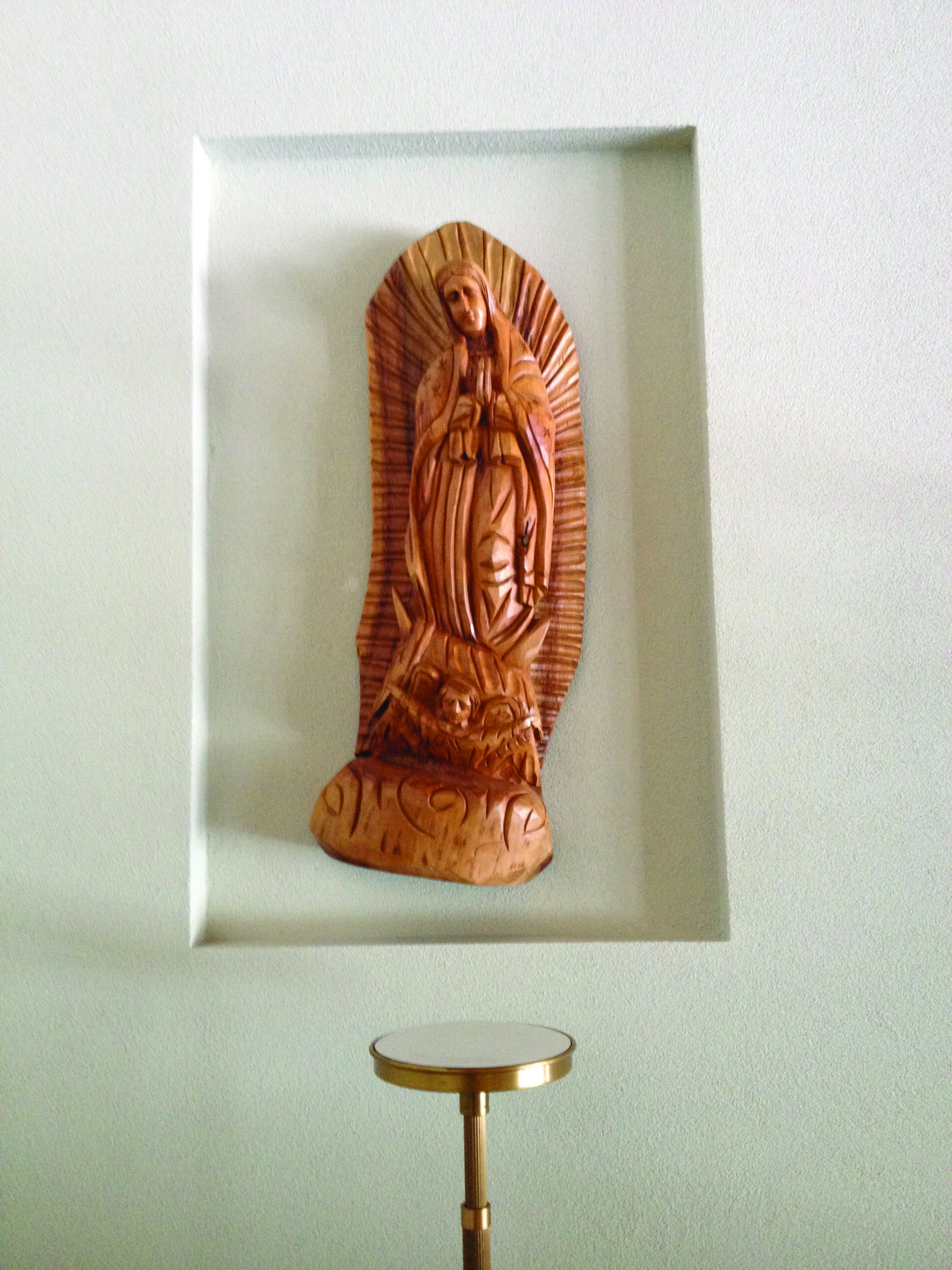
by Sister Sandra Delgado OP
In this Gospel reading we hear how the angel greeted Mary, ‘Hail full of grace. The Lord is with you!’ This wasn’t just any greeting but one full of respect acknowledging her favor with God. Seeing her fear, the angel tells her not to be afraid but then proceeds to tell her that she will bear the Son of God. Not a message anyone could take lightly, let alone a teenager, and Mary lets the angel know that. The angel also tells her that nothing is impossible for God, and Mary gives her whole being to God.
In 1531 in Mexico, then part of the new Spanish empire, the native people found themselves in what seemed like an impossible situation. Ten years earlier the Spanish had arrived in this Aztec empire and began to take over. The Aztec way of life had changed. Their leaders were no longer their leaders; their traditions were subdued, a new religion was forced upon them, and people with strange customs were now living among them and ruling them. An impossible situation. Mary certainly understood impossible situations and the good that could come out them.
We are in the season of advent. The time of waiting, of watching, and of hoping. What better time for this feast! The native people of Mexico were waiting for relief from the oppressor, they were watching for a change, and they were hoping to once again have their way of life. I think perhaps Mary saw this in the people and came at this time of waiting to point them in the direction of the only hope they had, the only hope we all have, her son Jesus Christ.
She was readily accepted by the people. The hill where she chose to appear had been the worship site of an Aztec goddess. But that goddess was not gentle or pretty or friendly to the people. The people worshipped her only out of obligation and, perhaps, fear. This woman, however, spoke softly and gently to Juan Diego in his native tongue of Nahuatl. She called him Juan Diegito, a way to address someone you love and care for.
Her appearance was that of the native people, dressed in the colors of the native people and with a ribbon around her waist that symbolized that the woman was pregnant. She didn’t want sacrifices or rituals. She only wanted Juan Diego to deliver a message to the new bishop, a Franciscan, friar Zumarraga. She was asking the bishop to build a church on that very spot. She didn’t ask for a church to honor her, but for a church that would bring people to her so she could lead them to Christ.
The bishop, like many in history, doubted this appearance and wanted proof. Mary, being the good Jewish mother that she is, provided her child what he asked for. Mary asked Juan Diego to pick roses to take to the bishop. He found the roses, that don’t normally grow at this time of the year, and carried them in his tilma. There, She provided the bishop with an image of herself on that piece of cloth that should have disintegrated in 20 years or so remains intact to this day. Scientists can’t explain the life of the tilma. They can’t explain the colors, not an ink known to humanity, they can’t explain why her eyes clearly show images of thirteen people. They can’t explain why the cloth maintains a normal body temperature or why they hear the heartbeat of an infant in utero. They can’t explain any of this. And the wonderful thing is that they don’t have to. The millions of native people who were baptized after this appearance had their proof of God’s love for them. They found a way out of their impossible situation, hope in a loving Mother and God.
Nearly 500 years later there are still millions of people drawn to Our Lady of Guadalupe whose only desire is to draw us to her Son. By listening to her Son’s message of the Gospel, we too, can find our way out of impossible situations, work toward helping others find their way, and help improve life for all. Just as Juan Diego found roses in an impossible time and location, let us also find roses in this world’s impossible places and situations.

